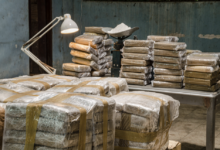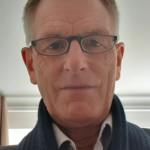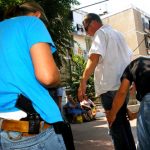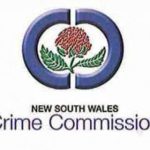Mark Standen: Corrupt Crime Commission Czar

A young schoolboy who aspired to be a Royal Australian Air Force (RAAF) pilot could not have dreamed his adult life would be entangled with Dutch drug cartel godfathers, semi-trailer drug manufacturing operations, millions of dollars in cash.
But budding law student and later-to-be deputy chief inspector and assistant director of the New South Wales Crime Commission, Mark Standen, would be enmeshed in all of that, and more.
The St Patrick’s student who used to jet ski over the water and scuba dive at Bateau Bay on the NSW central coast would later be involved in much larger sea going vessels, such as the Sinotrans Shanghai, a container ship arriving from Pakistan.
Enters public service
Despite his initial aspirations, Mark Standen joined the Australian Customs Service in 1975, which was subsequently renamed the Federal Bureau of Narcotics, before joining the National Crime Authority and then the Australian Federal Police (AFP).
In 1993, Mark Standen applied for a position at the Australian Crime Commission, but not before cashing in his superannuation to pay his significant gambling debts.
1996 saw him accepted for transfer to the NSW Crime Commission (NSWCC), where he became the organisation’s chief investigator and assistant director, one of the most powerful positions in Australian law enforcement.
Crime fighter
As a law enforcement officer, Standen was responsible for several muti million-dollar drug busts, leading to Australian drug importers.
He also accumulated a cadre of informants, closely associating with some of them over many years.
Early corrupt activities
Mr Standen was exposed during the Stewart Royal Commission in 1982 as one of two agents at the Federal Bureau of Narcotics who illegally disposed of drugs found during a search by flushing them down a toilet at the Old Customs House building to avoid doing the paperwork.
He faced internal sanctions as a result of his conduct, rather than anything more serious such as termination or criminal charges for attempting to pervert the course of justice.
Standen was also alleged to be involved in witness tampering in 2003, by reportedly threatening a witness and thereby leading him to decline to give evidence in the trial of an international drug lord and money launderer.
One of Standen’s informants relayed that a similar threat was also made against his children.
Anecdotal evidence suggests that Standen was additionally involved in illegally obtaining bribes over the years.
Despite all of this, Standen was still regarded as an extraordinary crime fighter, particularly in relation to drug importation.
Standen targets adversaries
It is believed Standen was also hell-bent during his career on obtaining reprisals against members of law enforcement who stood against or criticised him, including members of the Special Crime and Internal Affairs Command Unit (SCIA), and his position of power enabled him to do this with little oversight or accountability.
Former deputy NSW police commissioner Naguib (Nick) Kaldas was one of more than 100 NSW police officials whose families were subjected to surveillance and phone tapping, based on the Mascot taskforce set up in 1999 to investigate police corruption in NSW.
Whilst the issue of taskforce/operation Mascot was investigated by operation Prospect, in relation to surveillance of 100 senior NSW police officers regarding possible corrupt activities, this is a story for another time.
Professor Kaldas, then head of the NSW homicide squad, in an interview with investigative journalist, Adam Shand, stated that Standen led a team, amongst others within SCIA, including a potential competitor for the NSW police top job, detective inspector Catherine Burn; a team leader of SCIA, which was simply to even up old scores and corruptly included him for targeting.
The academic Kaldas said it was a payback from the days when he was a police union representative and had made political enemies, notwithstanding that he had also had a serious disagreement with a senior SCIA officer, superintendent, John Dolan.
Secret NSWCC documents revealed that the main informant known only as M5, an agent, in relation to operation Mascot, had confessed to senior SCIA officers, superintendent Dolan and detective inspector Catherine Burn, including NSWCC Mark Standen, that he had perjured himself by corruptly giving false information so warrants would be issued by the court.
Perhaps Standen saw it as an opportunity for a pre-emptive strike to eliminate those who may have begun to suspect him and his corrupt colleagues, such was his unchallenged power.
One of the recommendations by the ombudsman led operation Prospect, was that the NSWCC apologise to targets of operation Mascot and destroy recordings. Mascot was terminated in 2003.
A parliamentary upper house inquiry also called on the NSW government to issue an apology to the professor, who had been subject to 80 warrants, in relation to him and his family.
It also recommended an apology be given to all those targets who had no reason to have been treated inappropriately.
Itinerary of the drug importation
The following pictures show how the drug shipments reached Australia from the Netherlands, particularly the one which led to the arrest of one of the Dutch drug cartel’s global facilitator.
Who are the Haklander Cartel?
The Haklander cartel, named after its leader, Ronald Haklander, is a Dutch based drug cartel. aka as the Breda group, an eclectic group of businessmen, nicknamed reservoir dogs by the AFP. It is said that one was a Dutch police officer, with others an international poker player, martial arts champion, taxi driver and an arms dealer. One of them owned a castle in Spain.
Dutch authorities also refer to it as the Weerden group, after another alleged leader, Luik Weerden and whilst the eventual amount of the precursor which it wanted to export to Australia was ultimately settled at 300 kilograms, it is suggested it could have been up to 600 kilograms.
One of the sources of ephedrine and pseudoephedrine at the time, was war-torn Congo and some other African nations, where tonnes of medical aid would invariably go missing from the docks and warehouses where this aid was stored.
The Dutch are known as the world’s largest manufacturer of synthetic drugs, allegedly exporting multi-tonnes to Australia worth hundreds of millions of dollars, with little kangaroo symbols impressed on the ecstasy pills.
Whilst smaller imports were imported throughout the 1990s, it commenced in earnest with multi-tonnes of drugs hitting the streets of Australian cities round about 2001, to the point that; according to the Australian criminal intelligence commission in a 2021 statistical report, Australians now purchase $10.3 billion of illicit drugs from many countries annually.
This though, was only referring to 4 drugs, methylamphetamine, MDMA, cocaine and heroin.
What has all of this got to do with Standen?
In 2008, Mr Standen was arrested for conspiracy to import and supply 300 kilograms of pseudoephedrine, a precursor drug necessary to manufacture crystal methamphetamine aka ice, using the resources of the cartel. It is also used in the manufacture of speed and ecstasy tablets.
He also faced a charge of conspiracy to pervert the course of justice.
The charges were structured thus:
- Conspiracy to import a border controlled drug under sections 11.5 and 307.1 of the Criminal Code Act 1995 (Cth),
- Supply of prohibited drug under section 25(2) of the Drug Misuse and Trafficking Act 1985 (NSW), and
- Conspiracy to defeat justice under section 42 of the Crimes Act 1914 (Cth).
After a five-month trial in the Supreme court of NSW in 2011, Standen was found guilty by a jury and imprisoned for 22 years, with a non-parole period of 16 years, a subsequent appeal being dismissed.
According to author, actor and barrister, Susanna Lobez, Standen had earlier been offered a deal to plead guilty, whereupon the time he would have served would have been 8 years.
No honour amongst criminals: Standen’s informants lead to his downfall
An informant, Irishman James Henry Kinch, (codenamed echo by AFP) domiciled in England for most of his life, was a drug runner of transnational proportions, including a launderer of cash, who became a partner in crime with Standen.
Kinch was charged with conspiracy to import approximately over a tonne of ecstasy tablets and of having laundered $200 million, through money exchange facilities in Australian states. He was also regarded as one of the masterminds of the Dutch import, as he spent some years in Holland and came to Australia as a representative of the Breda group.
His initial contact with Standen came about when he was arrested, Standen being one of the arrest team.
It was then that he turned informant, after handing over $900,000 to the NSWCC, of which $300,000 was returned to him, with the agreement being it would be used to show the NSWCC how the Dutch laundering system operated.
Kinch’s charges were subsequently dropped and he eventually left Australia in 2004 a free man, with the $300,000 disappearing.
However, the relationship between Kinch and Standen stood strong, with Kinch via Bakhos (Bill) Jalalaty, a greengrocer with a food import and export business the conduit for paying Standen over a period of time between $300,000 and $500,000.
This, Jalalaty did electronically in tranches of $5,000, to keep it under the Australian transaction reports and analysis centre (AUSTRAC) reporting cap apparently. He also paid Standen some larger amounts in cash.
AUSTRAC was established in 1989.
Kinch had arranged $1 million to go to Jalalaty for disbursement. Jalalaty’s wife, Dianne Jalalaty, was unhappy with her husband for arranging her to sometimes electronically transfer money to Standen, as she was aware that there were drugs within the rice shipment.
Another story about the $1 million disbursement money, is that it was also to organise a warehouse and forklift and when it arrived, Standen talked Jalalaty into investing $700,000 of it, which as you’ve probably guessed, ultimately went missing. The $1 million had arrived in a sports bag in cash delivered by a Portuguese man.
The irony of this is that Bill Jalalaty’s friendship with Standen came about due to the friendship between Standen and a former senior AFP officer, who was Bill Jalalaty’s wife, that’s right, Dianne!
Dianne avoided prosecution after becoming an informant providing information on corrupt AFP personnel. Her husband, Bill, received a sentence of imprisonment for 6 years.
Jalalaty was the food importer where the shipment would be consigned as rice. Indeed, it was Dutch police which initially alerted the AFP that a senior member of the Breda group was in contact with Jalalaty.
Prior to his involvement with Standen and ultimately Kinch, Bill Jalalaty was simply a businessman with no criminal record.
Dutch police were quite devastated when they realised that Standen was the law enforcement official linked to the Breda cartel, as they had worked with the AFP and Standen at the NSWCC on other drug cartels exporting to Australia.
To avoid leaks due to the high position held by Standen, he was given the code name, Rupert.
Trip to Dubai
One of Standen’s colleagues was a surveillance monitor at the NSWCC until her romantic relationship with Standen was revealed, whereupon she was transferred to the NSW independent commission against corruption (ICAC). Her name was Louise Baker and Standen showered her with expensive gifts; such as a $4500 diamond ring, $1250 Tiffany necklace, $3000 Chanel handbag, including dinners at the best restaurants and stays at exclusive hotels.
The trip to Dubai in the United Arab Emirates in January 2007 was one outing she was looking forward to, but perhaps not as much as Standen.
For whilst Baker thought it was just another romantic trip, for Standen and his co-conspirators in a $60 million drug importation scheme, it was to meet up with each other in the final planning to bring 300 kilograms of pseudoephedrine into Australia.
In Dubai, Baker had dinner in the company of Rupert, Hogan and Rashid, the nicknames the AFP gave Standen and Kinch, with Jalalaty called Rashid.
A trial run containing rice had proved successful in clearing customs without any issues and now it was time for the real thing.
Louise Baker was not involved in the importation.
Standen and his other key informant or drug importing partner
Neville Tween, aka as John Anderson and before that, Neville Tiffen amongst other aliases, was yet another informant for Standen, initially at the National crime authority, the AFP, later the Australian crime commission and finally the NSWCC.
Neville lived just streets away from Standen during the early 90s, with members of the Standen and Tiffen families going into a lingerie business enterprise together according to Standen, although the Tween family also owned a marine goods business.
Tween was alleged to be a serious sex offender, who only did time in prison for one sex offence, although he was imprisoned on a raft of other charges over 50 years.
It is suggested that he was named as the suspect in up to 14 rapes in NSW northern beaches, but was not investigated, until decades later, despite some women alleging he was the man who raped them with an associate.
It is said that he was also a suspect in the killing of 3 people whose murders have never been solved.
Detective Gavin McKean, who became a lawyer, in 2008 was the first officer to interview Tween on the sex crimes, but to no avail, as he denied any involvement in the rapes and the missing Trudie Adams, a young lady Tiffen was suspected of murdering.
In 2008, a homicide police officer, Detective Jayson McLeod (Macleod), was working on a cold case and found similarities with that case and another cold case and had reason to speak to Standen about it. The call was to discuss with Standen about his strategy in pursuing Tween.
Standen initially appeared helpful, but later stalled on collaborating, soon after, visiting Tiffen, then imprisoned as Tween in Long Bay gaol.
It transpires that the Tiffen (Tween) and Standen families shared an address in Lakin street Bateau Bay at one stage, though according to Standen, not at the same time.
Tween died whilst incarcerated in gaol in 2013 for a cocaine import crime, with it being alleged by law enforcement sources that Standen was his protector for 30 years or so and the reason why many of his criminal actions saw very minimal prison time, until his protection ran out.
Was Standen involved in more drug importations?
1988, one of Standen’s colleagues in the federal bureau of narcotics, Allan Gregory McLean, was arrested and subsequently sentenced to 16 years in prison for involvement in importing millions of dollars of heroin in soccer balls from India.
Consider also, the friendship by Standen with Neville Tween, with whom he would go scuba diving and note that in 2006 Tween and his son, both expert scuba divers, were arrested in relation to the attempted import of a total of 27 kilograms of cocaine worth $6.75 million attached to the hull of two container tankers, the Norwegian flagged MV Tampa and its sister ship, the Taronga.
Reputable law enforcement sources reasonably infer that Standen could quite possibly have also been involved in this drug shipment.
Also in 2006, according to the NSWCC, Standen had asked Jalalaty to use his food import/export business to collect $90 million in cash from Western Australia and ship it to Dubai for Kinch.
This is feasible, as Kinch despite working for the Haklander cartel, was also a representative of several other Dutch drug cartels.
But was Standen expecting a share of the Western Australian $90 million. Had he been working with Kinch on other importations, with different corrupt individuals and perhaps different cartels?
A London based journalist nearly blew operation Octans
At the height of operation Octans, the name of the operation designed to get Standen, journalist, Charles Miranda was doing a series on the Italian mafia at news corp offices in London, when an AFP led team of agents from multiple countries entered the building.
It appeared that the journalist had stumbled on information which had the propensity to tip off Standen, if he continued reporting on the investigative story. Precisely what it was within the story which concerned the good guys, we may never know.
What we do know is that Charles was working on an Italian mafia story concerning Dutch importation into Australia and that is as far as he was prepared to go.
A deal was hatched with the AFP and the Dutch police authorities that Miranda would cease writing on the proviso that he have the inside running on the case at the arrest stage.
indeed, by the time the Australian arrest team had handcuffed Standen in the NSWCC carpark and transported him to police headquarters to commence interviewing him, the story was trending worldwide, courtesy of Miranda.
It must have been some deal, for News corp. had access to AFP investigative notes.
Back to the boy who loved to jet ski and scuba dive
The time for Mark Standen’s involvement in larger sea going vessels had arrived, with the docking of the cargo ship, the Sinotrans Shanghai. However, it was not going to be as enjoyable as his time in the sea at Bateau Bay.
The rice shipment with the pseudoephedrine could not be collected, as it had arrived minus the bill of lading.
Whilst some frantic phone calls were being exchanged between Australia, Holland and Pakistan to sort out the paperwork required for the shipment to clear customs, it was determined that the Pakistani end had been holding the paperwork until a ransom of additional cash was paid.
It appeared to have been resolved and the shipment arrived at Jalalaty’s warehouse, BJ fine foods, with nobody any the wiser at this point that it was a double cross.
Apart from the AFP, of course, who had inspected the shipment earlier.
There was no pseudoephedrine within the rice shipment!
Are there more Mark Standens in law enforcement?
An interview with Professor Michael Kennedy of the university of New England revealed some staggering facts concerning just how endemic the corruption was at that time and not only confined to the rank and file, but a significant number of very senior police members, particularly members of the AFP.
Well, earlier in this article we explored Standen’s failures, yet he was appointed to one of the world’s most significant law enforcement positions by way of executive recruitment, which means less checks and balances, in that he came highly recommended by AFP superiors, who knew of his suspect background.
It has been suggested by sources close to the machinations of such positions, that at times political referees are involved. Remember what Professor Kaldas had to say about making political enemies at the time he was a police union representative.
Detective superintendent, Ray Cooper of AFP internal affairs, an honest but uncompromising old school, cop raised questions about Standen’s associations in the 1980s, requesting an audit of the AFP exhibit storeroom, after the former head of the eastern region drug unit was identified as having supplied a large quantity of heroin to a registered informant.
The permission for this audit was denied. The question must be why, as within a year, Cliff Taylor, a well-known heroin dealer was apprehended twice, with searches revealing on one of those occasions that the heroin in the boot of his car had AFP stickers.
Detective Superintendent Cooper relayed the story of his investigation into a chief inspector of the narcotics bureau, suspected of links with those supplying heroin and an organised crime syndicate; importing large quantities of hash into Australia from New Zealand, being taken from his control and derailed.
This was done to avoid a public scandal. Politics at work again! His words were that he was denied approval to use phone taps and worse, several witnesses were kidnapped and threatened by corrupt federal detectives
Police officer, Wayne Sievers, was another honest one who was stationed there from 1983 to 1988a and said it was like living inside a grubby episode of Miami vice.
Michael Anthony Wallace, former corrections officer and AFP officer in charge of exhibits was subsequently convicted of the offence of stealing $20 million of seized heroin (surely it didn’t include the heroin in the soccer balls from India?) in 1990 and was sentenced to 12 years in prison.
When a former undercover police operative had a discussion with Taylor some years later, he was told that Wallace and Taylor had teamed up and had been selling AFP drugs for years.
Wallace, according to a reliable insider, didn’t name accomplices, despite the fact there are two people, each with a key to unlock and enter the exhibits area simultaneously, meaning he somehow got hold of the second key. No allegation is levelled against the holder of the second key.
A cautionary tale of a courageous law-abiding police officer
Anther police officer, this time an undercover operative who was an organised crime specialist from 1984 to 1996, endeavoured in 1988 to expose widespread corruption in the AFP and NSW/AFP joint drug task force.
As a result of this, detective inspector, Neville Hadgkiss under the instruction of his superior at that time, Commander, Adrian Melville Whiddett planned to have this NSW state police officer investigated.
Operational AFP officer, Ray Thornton, of the internal security and audit division (ISAD) who in 1995 was tasked with meeting with acting justice Ken Carruthers presiding judge in the trial of the man accused of assassinating assistant commissioner Colin Stanley Winchester in 1989, David Eastman.
In fact, he was ordered by commander Whiddett, despite his department having nothing to do with providing security for judges, to attend a one-on-one meeting with His Honour about a threat to his safety from Eastman.
Officer Thornton was given a confidential psychiatric report compiled by Dr Rod Milton to read before meeting with the justice, however, couldn’t remember who gave him the report.
Despite finding the meeting highly unusual, he did not keep any notes of what transpired.
This is the type of superiors opposing the endeavour of the undercover police officer to bring attention to what appeared to be systemic corruption.
The Commonwealth director of public prosecutions (CDPP) at that time was the director and mentor of rogue cop, NSWCC assistant director, Mark Standen during Standen’s planned importation of 300 kilograms of pseudoephedrine in 2008; and recommended that the undercover operative be charged with falsely accusing federal police of being corrupt.
This brave officer having been worn down by years of fighting against corruption and facing a corrupt investigation and charge himself, entered into a plea bargain and faced a NSW local court in 1989; on the proviso that he kept his job, receiving a 12 months $500 good behaviour bond, under section 64 of the AFP Act 1979.
Honest covert operator exposes attempt to bribe a judge
Giving evidence in the matter of Hani Taouk who attempted to bribe NSW district court justice, His Honour, judge Shillington, the state police undercover officer told the court that he was the person who received the bribe of $35000 from home builder, Hani Taouk.
Taouk apparently owned a number of brothels and an escort agency, not on his own it is anecdotally suggested.
Another of Standen’s colleagues, at the Wood royal commission and Harrison inquiry, ordered by then federal attorney general, Daryl Williams, nominated 78 NSW AFP and state senior police as being corrupt.
Interesting that the undercover operative’s partner in operations and indeed once considered a loyal friend, AFP Detective Dennis Pattle betrayed him and with others, stole $200,000 from cocaine traffickers during operation pickup.
Detective Trevor Haken turned informer and told the royal commission that assistant commissioner, Ray Donaldson, was one of 20 Commonwealth state joint drug task force offices who shared in the cash windfall at the beginning of 1984.
9 of the 20 received $13000, with the remainder getting $1,000 each, leaving quite a bit for future expenditure, though detective Pattle soon arrived wearing Rolex watch.
Interesting fact is that the brief case of another assistant commissioner, A/C Lamb was located at a drug dealer’s home with $14,000 in it. So, as we can see from the allegations that it appeared to go all the way to the top, stopping one place from the pinnacle, that of the chief commissioner.
One of the common denominators was Standen, as many were his colleagues, yet whilst he was around some of the time this systemic corruption was going on, he is not mentioned in despatches. Could it be that the divvying up of $13,000 was small change for Standen?
Wood Royal Commission 1995 and Harrison Federal Inquiry 996
As a result of AFP corruption claims exposed by the Wood royal commission, 1996 saw a federal inquiry chaired by Sydney barrister, Ian Harrison, where Associate Professor Michael Kennedy and officers Cooper and Sievers testified.
All three, amongst many others, say little was achieved, primarily as it held no public hearings, with the findings classified and called for the inquiry report to be made public. What they got was a mild summary of proceedings.
When the question of are there more Mark Standens in NSW law enforcement, was put to criminal law experts, such as Associate Professor Michael Kennedy, of the university of New England and Egyptian born Australian, Professor Nick Kaldas, chair of the NSW multiculturalism advisory board and the board of commission for international justice, amongst other eminent organisations, say that it is likely there are more like Mark Standen within our law enforcement ranks.
The above examples would appear to support this.
Professor Kaldas goes one step further, when he strongly suggests, along with a significant number of criminal justice system stakeholders, that Standen could have in one fell swoop, opened pandora’s box on the corruption which existed when he was jailed, but chose to remain silent.
Why? Was he scared for his family? Was he being paid to keep his mouth shut?
We can only hope that with the passage of time, the retirement of many and the oversight bodies which now exist, that the risk of another Standen going unchecked in our law enforcement system has been vastly reduced.
As such, it is imperative that there are strict independent oversight bodies to ensure that nobody has such unchallenged powers ever again, as whilst systemic corruption was revealed, very few faced serious penalties and many left with their pensions intact, some even with a golden handshake.
Justice Wood invoked an amnesty, based on the fact that the information exchanged for no prison time in many instances, was deemed more beneficial in learning about the machinations of the corruption, which probably wouldn’t bear similar fruit at a trial.
Mark William Standen, the boy who wanted to be a pilot is now a legal eagle, who will never be able to join the ranks of practising counsel.
He gained a law degree whilst incarcerated and with Marcus Einfeld, another legal eagle, one of the few people he was able to associate with for safety reasons, was able to for a short time at least, enjoy a game of scrabble, before retiring to their individual cells for the night.
A sad existence for once, two of the most powerful and highly respected identities in NSW, though, with their crimes at the opposite end of the spectrum.
One has already left prison with the ability to restore his integrity, the other will have to live his life out in the knowledge that he can never atone for the harm he will have contributed to.
That is the life of a drug trafficker, if he has a conscience.
The other boy
It would be remiss not to conclude with the story of another young person who had plans. This boy didn’t have a privileged childhood so you would have thought the odds were against him and you would be right.
However, this was a resilient kid, who left an establishment, not a home, to undertake a 5-year apprenticeship in the printing industry, before joining the cops, his dream.
His self-initiated moral upbringing saw him stand up to the bullies in the police force, like he had done most of his childhood, the bullies of course being the corrupt police officers. This policeman was described by Justice Newman in the 1992 trial of Taouk v The State of New South Wales, as a witness of truth and integrity.
In conclusion, not only was this officer a man of integrity, but he was also vindicated at both the Wood Royal Commission and Harrison Inquiry and subsequent events, that what he was saying in relation to corrupt members was in fact true.
Whilst law enforcement officer Standen talked the talk, this man walked the walk and went on to be a leading lecturer in academia, indeed, a professor.
Breaking news
Let’s fast forward to the present day, March 2023, and have a look at breaking news which suggests law enforcement agencies continue to be plagued by crime and corruption.
Australia’s largest cocaine bust worth $1 billion has seen the AFP air its dirty laundry in public, which is something that has been occurring in some form or other for the past 3 decades at least, according to Professor Michael Kennedy of the university of New England, who lectures in philosophy, ethics and even law amongst other subjects.
Some might ask after reading this article, is it any wonder some other countries law enforcement organisations are wary of the AFP.
Sydney NSW saw 2 United States Drug Enforcement Agency (DEA) agents bypassing the AFP to alert Western Australian police of 2.8 tonnes heading its way.
2 days before the start of 2023, In a joint transnational operation on the high seas, $1 billion of cocaine was seized, whilst sailing to Western Australia.
The Australian contingent weren’t aware of the seizure and got ready to collect 2.4 tonnes. The cocaine was substituted with fake drugs and dropped off 40 nautical miles west of Perth just after Xmas.
12 people were arrested from New South Wales, Western Australia, the Northern Territory and America.
2 others were also arrested on the Great Eastern highway carrying $2 million in cash, possibly the first customers to purchase some of the cocaine exported by a Mexican cartel.
Operation Beech as it was called, was comprised of the Sydney office of the Drug enforcement administration (DEA) and the Western Australia police force transnational serious and organised crime squad.
More breaking news
Another AFP officer has also just been charged with high level corruption, money laundering and theft in an operation by the Australian Commission for Law Enforcement Integrity (ACLEI) is due to face Melbourne magistrates court on 28 March 2023.
What was the AFP airing its dirty laundry in public all about
AFP commissioner, Reece Kershaw took the complaint that the AFP had been bypassed to none other than the US ambassador, Caroline Kennedy, resulting in the 2 DEA officers being sent back to America, despite universal praise by the rest of Australian law enforcement agencies.
AFP alleged that Australia’s sovereignty was not adhered to, but NSW and Western Australian police held a reception to thank the DEA agents.
The same DEA agents also joined NSW state police and the NSWCC in operation Jillabenan, in 2021, again bypassing the AFP, resulting in the seizure of $900 million of cocaine.
Could the wariness of the AFP have something to do with a 2020 $100 million shipment of cocaine that went missing leading to a gangland war in Sydney which left 12 people dead, with NSW police believing it involved the AFP in a botched operation? Or….
NSW police also seized close to 2 tonnes of ice at a Sydney port towards the end of last year, concealed in marble, which arrived from the Middle East, worth approximately $1.6 billion.
Around the same time at the same port, a Bentley motor vehicle containing 150 kilograms of methamphetamine was discovered.
Approximately 1.2 million Australians consume methamphetamine-based illicit drugs annually.
Receive all of our articles weekly
Related Articles
RELATED LEGISLATION
- Section 315A Crimes Act 1900 | Threatening or Intimidating Victims or Witnesses
- Section 319 Crimes Act 1900 | Perverting the Course of Justice
- Section 25 Drug Misuse and Trafficking Act 1985 | Drug Supply
- Section 307.1 Criminal Code Act 1995 | Importing or Exporting A Commercial Quantity of Border Controlled Drugs






